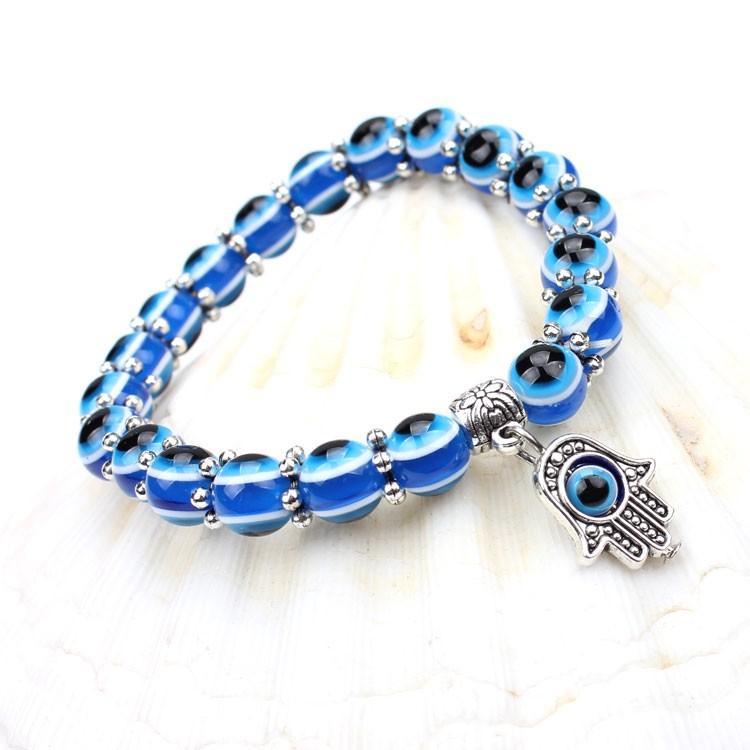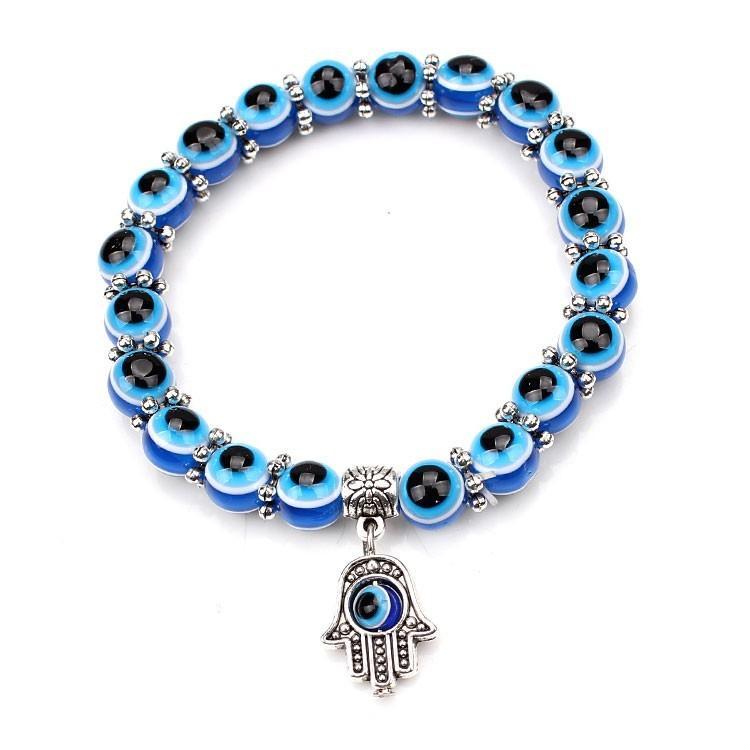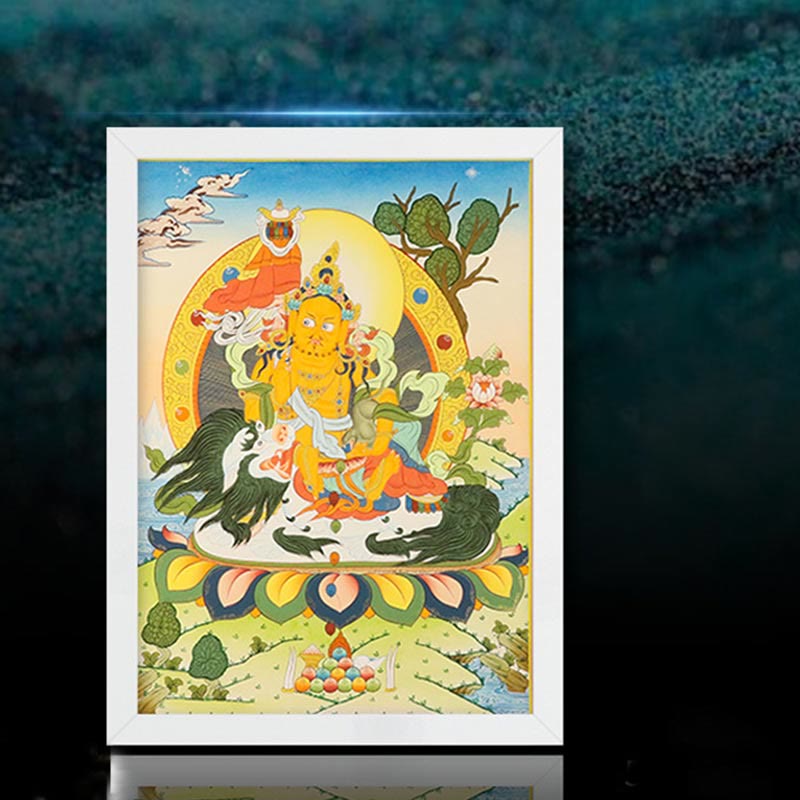La main de Hamsa, symbole ancien de protection, de bénédiction et de force, fascine les cultures depuis des millénaires. Son emblématique main droite ouverte, souvent ornée d'un œil, est un emblème puissant présent dans diverses traditions. Aujourd'hui encore, l'art de la main de Hamsa continue d'inspirer, évoluant de formes profondément traditionnelles vers des créations d'une modernité saisissante. Que vous soyez attiré par sa signification spirituelle, sa riche histoire ou sa beauté esthétique, explorer l'art et les créations de la main de Hamsa offre un voyage fascinant dans un monde où le symbolisme ancien rencontre la créativité contemporaine. Cet article vous guidera à travers l'univers diversifié de l'art de la main de Hamsa, de ses racines traditionnelles à sa présence vibrante dans la décoration moderne et les styles personnels, vous aidant à comprendre son attrait durable et à intégrer son énergie unique à votre vie.
Le symbolisme durable de l'art Hamsa
L'art de la Hamsa est fondamentalement empreint d'une signification profonde. La main elle-même est universellement reconnue comme un symbole de protection, censé éloigner les énergies négatives et le mauvais œil. Les doigts peuvent représenter différents concepts : certaines traditions associent les cinq doigts aux cinq livres de la Torah, aux cinq piliers de l'islam ou aux cinq chakras. Un œil est souvent représenté dans la paume de la Hamsa, symbole de vigilance et de providence divine, offrant une protection supplémentaire contre le mal. Si ses interprétations varient légèrement selon les cultures, les thèmes fondamentaux de la chance, de la santé, du bonheur et de la protection divine demeurent constants, faisant de l'art de la main Hamsa un emblème universellement apprécié.
L'art traditionnel du Hamsa : racines et motifs
L'art traditionnel de la Hamsa est imprégné d'histoire, ses racines remontant à l'ancienne Mésopotamie, à la Phénicie et à l'Égypte. Ces premiers Hamsas étaient souvent fabriqués à partir de matériaux tels que le métal (argent, or, bronze), la pierre ou le bois. Parmi les motifs courants figuraient des motifs floraux complexes, des poissons (symboles de chance et de fertilité) et des inscriptions de prières ou de bénédictions. Les couleurs utilisées étaient souvent riches et symboliques, comme les bleus profonds associés à la protection et à la divinité. Les motifs traditionnels privilégient la symétrie et présentent souvent une esthétique plus ornementale et détaillée, reflétant le savoir-faire artisanal d'autrefois. Ces pièces étaient, et sont toujours, utilisées comme amulettes, tentures murales et éléments décoratifs dans les maisons pour invoquer protection et bénédictions.

Interprétations modernes des motifs Hamsa
Le symbole de la Hamsa a traversé les cultures et les générations, et les artistes l'ont constamment réinterprété, donnant naissance à une gamme vibrante de motifs modernes. Les artistes contemporains expérimentent avec divers matériaux, des métaux élégants et des plastiques colorés aux bois naturels et aux céramiques minimalistes. L'art moderne de la Hamsa présente souvent des lignes épurées, des formes abstraites et une palette de couleurs plus large, intégrant parfois des couleurs pop art éclatantes ou de subtils monochromes. On peut trouver des Hamsas ornées de motifs géométriques, de mandalas, de pierres précieuses, ou même intégrées à l'art numérique et aux graphismes. Cette évolution permet à ce symbole ancien de résonner avec l'esthétique contemporaine tout en conservant son essence spirituelle fondamentale, ce qui en fait un élément polyvalent de l'art et de la décoration modernes.

Œuvres d'art Hamsa dans la décoration intérieure et le style personnel
La polyvalence de l'art Hamsa en fait un choix populaire pour la décoration intérieure et personnelle. Objet décoratif, l'art mural Hamsa peut devenir le point central d'une pièce, apportant un sentiment de paix et de protection. Des tapisseries complexes et sculptures en métal aux estampes et toiles modernes, il existe un style Hamsa qui s'adapte à tous les intérieurs. Les petits porte-bonheur Hamsa peuvent être accrochés aux portes ou dans les voitures. Pour un style personnel, les bijoux Hamsa – colliers, bracelets, boucles d'oreilles – restent un moyen apprécié de véhiculer les vertus protectrices du symbole. Le contour simple de la main de Hamsa est un motif populaire pour les bijoux minimalistes, tandis que les créations plus élaborées intègrent des pierres précieuses et des ornements en métal précieux.
Amulette de jardin en acier inoxydable 3D
$22.90 $29.90
Rehaussez vos espaces intérieurs ou de jardin avec cette toupie protectrice Hamsa, fusionnant le symbolisme traditionnel avec l'art cinétique moderne.
Explorer le produitÀ la découverte des différents styles artistiques du Hamsa
La beauté de l'art de la Hamsa réside dans son incroyable diversité. Les artistes explorent une multitude de styles, garantissant ainsi une Hamsa pour tous les goûts. Parmi les styles les plus populaires, on trouve :
- Imprimés Hamsa colorés : vibrants et incorporant souvent des motifs complexes, ils sont parfaits pour ajouter une touche de couleur et d'énergie positive à un espace.
- Décoration murale Hamsa en métal : Fabriquées à partir de matériaux tels que le fer, le laiton ou l'acier inoxydable, ces pièces peuvent aller du rustique au très poli et moderne.
- Motifs Hamsa en bois : Offrant une sensation naturelle et terreuse, les Hamsas en bois peuvent être sculptés, peints ou découpés au laser.
- Sculptures Hamsa : Les Hamsas tridimensionnels ajoutent un élément tactile unique, disponibles dans divers matériaux et tailles.
- Art numérique Hamsa : la technologie moderne permet une créativité sans fin, avec des artistes numériques produisant de superbes graphismes Hamsa et des œuvres d'art imprimables.
Cette large gamme de styles vous permet de trouver des œuvres d'art Hamsa à vendre qui s'harmonisent parfaitement avec vos goûts esthétiques et spirituels. Pour en savoir plus sur les facettes symboliques de l'art protecteur, vous trouverez des informations précieuses dans des ressources comme la section Art islamique du Metropolitan Museum of Art , qui présente souvent des objets aux propriétés apotropaïques (anti-maléfiques) similaires.

Nombreux sont ceux qui trouvent également l'inspiration en créant leur propre Hamsa, que ce soit par la peinture, le dessin ou l'artisanat. La création d'un Hamsa peut être une expérience méditative et profondément personnelle.
Créez votre propre art Hamsa ou trouvez-en un parfait
Que vous soyez un artiste cherchant à créer votre propre motif Hamsa unique ou que vous cherchiez la pièce parfaite à intégrer à votre vie, le voyage est enrichissant. Pour ceux qui souhaitent acheter, explorer les boutiques d'artisans, les plateformes en ligne et les galeries spécialisées dans l'art spirituel ou multiculturel peut vous permettre de faire de belles trouvailles. Choisissez les matériaux, les couleurs et le style qui vous correspondent le mieux. Préférez-vous un style traditionnel et ornementé, ou une touche plus contemporaine et minimaliste ? Comprendre les symboles de l'art Hamsa et leurs significations peut également guider votre choix, vous assurant que la pièce choisie reflète les intentions spécifiques que vous souhaitez cultiver. Explorer différentes interprétations et expressions artistiques peut approfondir votre appréciation de ce symbole ancien, comme le soulignent les études sur le symbolisme des objets culturels .
- Réfléchissez au sens que vous souhaitez mettre en avant (protection, chance, santé).
- Considérez le style qui convient le mieux à vos goûts et à votre décor (traditionnel, moderne, minimaliste, orné).
- Explorez différents matériaux et leurs propriétés énergétiques.
- Recherchez des pièces qui résonnent avec vous à un niveau personnel.
Décorez votre vie avec des pièces Hamsa pleines de sens
$29.99
$39.99
Portez un élégant bracelet main Hamsa pour incarner la protection et l'art intemporel dans vos accessoires du quotidien. En savoir plus ➔
$499.90
$699.90
Transformez votre espace avec des œuvres d'art murales peintes à la main de qualité supérieure, alliant motifs anciens et décor moderne pour une ambiance spirituelle. En savoir plus ➔
Conclusion
Des amulettes anciennes aux chefs-d'œuvre contemporains, l'art Hamsa demeure une forme d'expression vibrante et pleine de sens. Son attrait durable réside dans son symbolisme puissant, sa riche histoire culturelle et sa remarquable adaptabilité à divers styles artistiques. Que vous le recherchiez pour vous protéger, comme déclaration de foi ou simplement pour sa beauté esthétique, l'art Hamsa offre une façon unique de se connecter aux traditions ancestrales tout en s'ouvrant à la créativité moderne. Explorez l'univers des créations Hamsa et découvrez comment ce symbole intemporel peut apporter inspiration, positivité et une touche d'art sacré à votre vie et à votre intérieur. Healing Sounds propose une sélection soignée d'objets inspirés par Hamsa, alliant harmonieusement tradition et esthétique moderne, vous aidant à trouver la pièce parfaite pour résonner avec votre esprit.
Questions fréquemment posées sur Hamsa Art and Designs
La main de Hamsa symbolise principalement la protection contre les énergies négatives et le mauvais œil . Elle est également largement considérée comme un symbole de bénédiction, de pouvoir, de force, de chance, de santé et de bonheur. Ses significations spécifiques peuvent varier légèrement selon les cultures, mais le thème central de la protection est universel.
Bien que les symboles de la main soient présents dans l'hindouisme (comme Abhaya Mudra), le Hamsa, comme on l'appelle communément (la main droite ouverte, souvent ornée d'un œil) , n'est pas à l'origine un symbole hindou . Ses origines remontent principalement au Moyen-Orient et à l'Afrique du Nord, et il est présent dans les traditions juive, islamique et certaines traditions chrétiennes. Cependant, grâce à son attrait universel, son imagerie peut être retrouvée et appréciée dans divers contextes spirituels aujourd'hui.
Oui, tout le monde peut porter une Main de Fatima . Bien qu'elle soit profondément ancrée dans certaines religions et cultures, son symbole de protection et de chance est largement apprécié par de nombreuses croyances et par des personnes sans appartenance religieuse particulière. Elle est souvent considérée comme un symbole universel de positivité et de protection contre la négativité.
La Hamsa est utilisée par plusieurs religions et cultures. Elle est particulièrement présente dans le judaïsme (souvent appelée la Main de Myriam) et l'islam (souvent appelée la Main de Fatima). On la retrouve également dans certaines formes du christianisme levantin et trouve des racines anciennes dans diverses cultures du Moyen-Orient et d'Afrique du Nord antérieures à ces religions. Aujourd'hui, son utilisation transcende les frontières religieuses.
Les motifs artistiques Hamsa courants représentent souvent l'emblématique main droite ouverte , représentée de manière symétrique ou plus organique. De nombreux motifs intègrent un œil dans la paume , symbole de protection contre le mauvais œil. Parmi les autres éléments courants figurent des motifs floraux ou géométriques complexes, des poissons (symbolisant chance et fertilité), des étoiles de David ou des inscriptions religieuses. Les motifs modernes explorent les styles minimalistes, les interprétations abstraites et une grande variété de couleurs et de matériaux.







